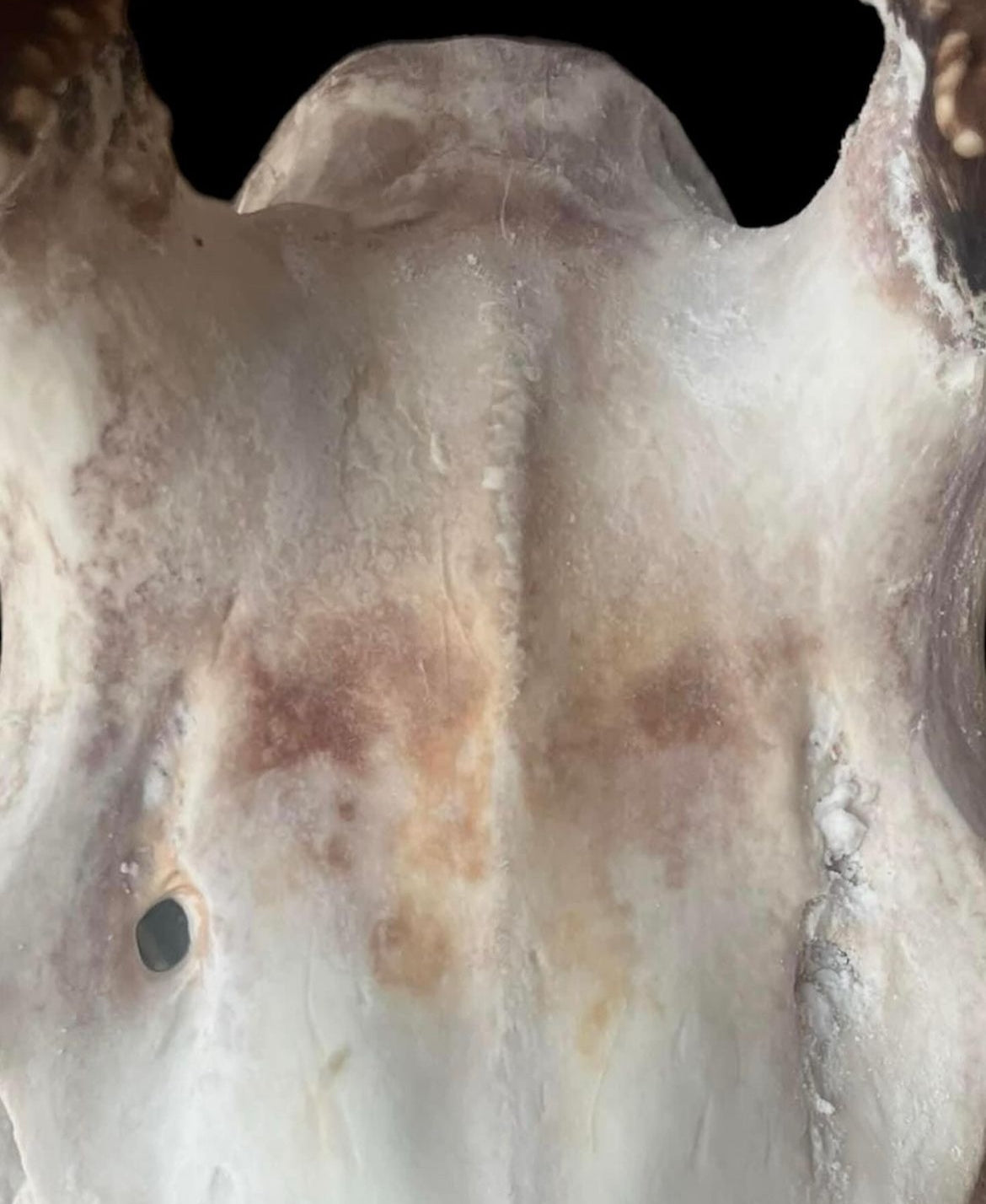
Blood Staining
Blood staining happens when blood and body fluids soak into bones as a body decomposes. Over time, the blood seeps into the bones, leaving behind stains. These stains can be different colors and intensities, depending on the type of blood, environmental conditions, and how long the bones were exposed to the blood.
When an animal dies and decomposes in one place or in a confined space, the bones might stay in contact with blood and body fluids for a long time. This prolonged exposure allows the blood to penetrate deep into the bone tissue, causing stains that can be seen even after the bones are cleaned or weathered. This interaction highlights the complexity of what happens to a body after death.
Environmental conditions play a big role in how blood stains appear on bones. Factors like humidity, temperature, and microbial activity can change how fast a body decomposes and how much blood the bones absorb. For example, in humid environments, blood staining might be more noticeable because higher moisture levels help the bones absorb more blood. Temperature changes can also affect microbial activity, influencing the appearance of blood stains.
Blood stains on bones usually appear as dark or reddish-brown spots. These stains are often found in areas where blood pooled or seeped into cracks and fractures. You can identify blood stains by looking for these discolorations, or through chemical tests that detect hemoglobin or other blood components.
Sometimes, it’s necessary to remove blood stains from bones for scientific analysis or display. One effective way to do this is by soaking the bones in a solution called Iron Out, which contains oxalic acid. Soaking the bones for up to 12 hours in cold water and Iron Out helps dissolve and lift the blood stains, making the bones look cleaner. This process needs to be done carefully to avoid damaging the bones.
Blood staining on bones helps scientists understand the decomposition process and the interaction between bones and the environment as well. In forensic anthropology, understanding blood staining can help reconstruct what happened around the time of death, providing important evidence in investigations. In paleontology, it helps us learn about the living conditions of ancient animals, adding to our knowledge of historical ecosystems.